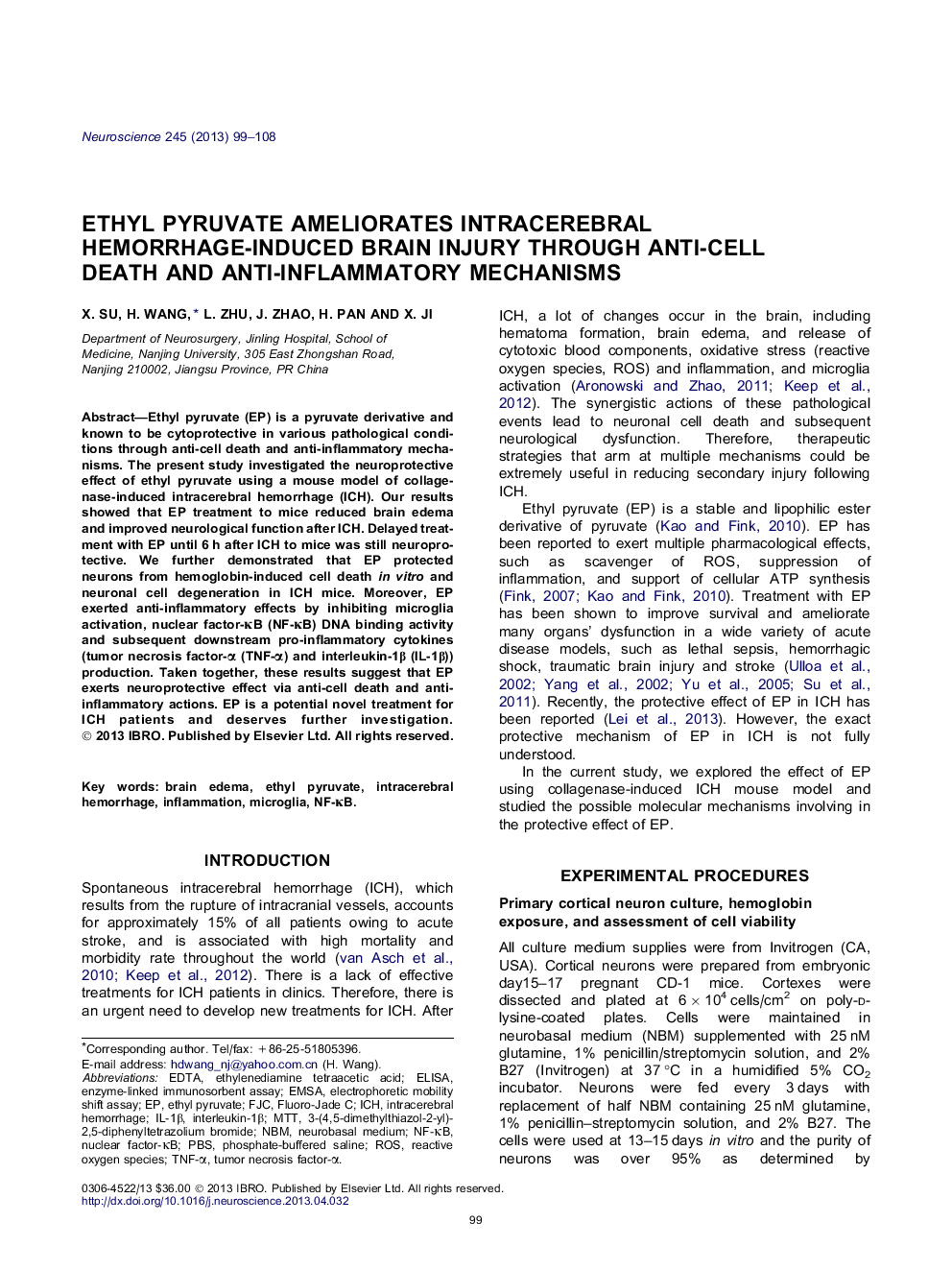| Article ID | Journal | Published Year | Pages | File Type |
|---|---|---|---|---|
| 4337978 | Neuroscience | 2013 | 10 Pages |
•We examined the efficacy of ethyl pyruvate (EP) after ICH in mice.•EP protected primary neuron from hemoglobin-induced cell death in vitro.•EP reduced cell degeneration, brain edema and improved neurological function.•EP inhibited microglia and NF-κB activation, TNF-α and IL-1β production.
Ethyl pyruvate (EP) is a pyruvate derivative and known to be cytoprotective in various pathological conditions through anti-cell death and anti-inflammatory mechanisms. The present study investigated the neuroprotective effect of ethyl pyruvate using a mouse model of collagenase-induced intracerebral hemorrhage (ICH). Our results showed that EP treatment to mice reduced brain edema and improved neurological function after ICH. Delayed treatment with EP until 6 h after ICH to mice was still neuroprotective. We further demonstrated that EP protected neurons from hemoglobin-induced cell death in vitro and neuronal cell degeneration in ICH mice. Moreover, EP exerted anti-inflammatory effects by inhibiting microglia activation, nuclear factor-κB (NF-κB) DNA binding activity and subsequent downstream pro-inflammatory cytokines (tumor necrosis factor-α (TNF-α) and interleukin-1β (IL-1β)) production. Taken together, these results suggest that EP exerts neuroprotective effect via anti-cell death and anti-inflammatory actions. EP is a potential novel treatment for ICH patients and deserves further investigation.
